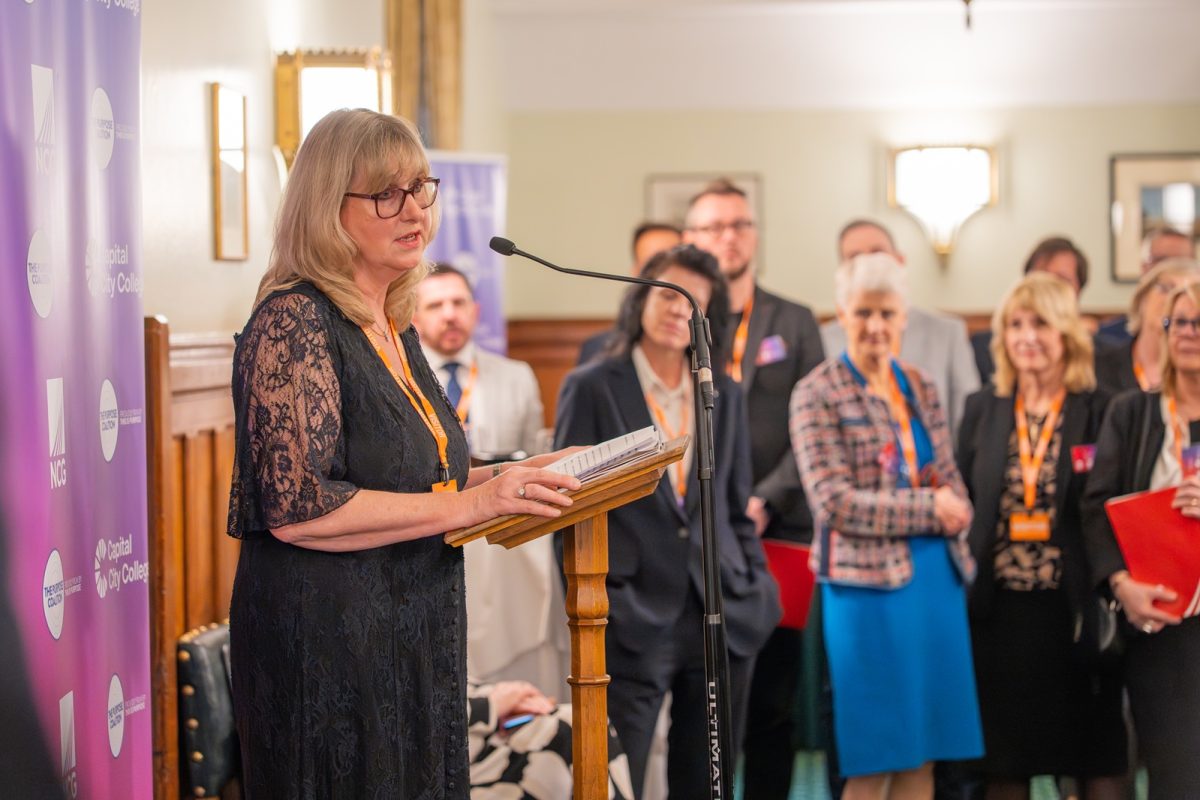Unemployment reaches a five year high

UK labour market: under 25s contributed over 60% of the fall in employment
The latest three months to February 2021 recorded small increases in the number of payroll employees although since February 2020, the number of payroll employees has fallen by 693,000 with the largest falls seen at the start of the coronavirus (COVID-19) pandemic. Analysis by age band shows that under 25s contributed over 60% of the fall seen since February 2020.
 Chancellor of the Exchequer, Rishi Sunak, said:
Chancellor of the Exchequer, Rishi Sunak, said:
“Coronavirus has caused one of the largest labour market shocks this country has ever faced, which is why protecting, supporting, and creating jobs has been my focus throughout this crisis.
“We have taken decisive action with a £352bn package of support.
“The continued success of the vaccine rollout provides us with hope for the future, and through our Plan for Jobs, we will continue to support people throughout the months to come.”
 Sam Windett, Director of Policy at Impetus warned:
Sam Windett, Director of Policy at Impetus warned:
“With under 25s making up over 60% of the hundreds of thousands of people that have lost their jobs since the start of the pandemic, it’s clear that young people need more urgent support.
“Amid this youth unemployment crisis, the Prime Minister must deliver the Opportunity Guarantee he promised in June for every young person. Young people must get the help they need to move into education, training or work and, if they are out of work for over six months, they should be guaranteed a job or training place.
“After one year of lockdown, we can’t wait any longer before delivering this much-needed support.”
 Stephen Evans, chief executive of Learning and Work Institute, said:
Stephen Evans, chief executive of Learning and Work Institute, said:
“Unemployment has risen again, but could have been 2.5 million higher without the furlough scheme given how much the economy shrank. However, the pandemic has had stark and unequal impacts, with young people and areas with high unemployment before the pandemic hardest hit. We’ll be living with its effects for years to come, with long-term unemployment already up by one third.
“As vaccine success allows us to look ahead, we should aim for better than a return to business as usual. That means making sure every young person has a job or training offer, including the 500,000 set to leave full-time education this summer, tackling the rise in long-term unemployment, and renewing our focus on the quality of work.”
 Tony Wilson, Director of the Institute for Employment Studies said:
Tony Wilson, Director of the Institute for Employment Studies said:
“There’s good news and bad news in today’s jobs figures. The good news is that a year on from the start, there are clear signs now that the labour market has started to turn the corner. Payrolled employment has risen for three months in a row and it appears that unemployment may have peaked for now, at well under half of where many of us had feared it may have got to a year ago.
“But there is bad news today too, with the data showing that new hiring is continuing to fall back and all of the improvement is being driven by fewer people leaving work rather than more people getting new jobs. This is proving to be a disaster for young people, who now account for nearly two thirds of the fall in employment and none of the recent growth.”
 James Reed, chairman of REED, said:
James Reed, chairman of REED, said:
“Today’s ONS unemployment statistics, falling on the one-year anniversary of the first lockdown, are a solemn reminder of the impact COVID-19 has had on our economy in just twelve months.
“Back in 2019, before we were aware of COVID-19, I reported that a recession was underway. This was based on declining jobs data from reed.co.uk. At the start of the pandemic, I warned of a tsunami of job losses. The subsequent explosion of the virus in 2020 certainly made things worse. With unemployment now at 1.70 million and a further 4.7 million people on furlough, 21% of the workforce is not fully active. This means there is a huge amount of work to be done to galvanise the economy.
“But this doesn’t mean the economy hasn’t started to recover. Over 80,000 new jobs were added onto reed.co.uk in the first two weeks of March and nearly 200,000 new jobs went live on the site in February – which was only 1% lower than February 2020 when COVID-19 had yet to become established in the UK.
“The economy has been supported through this crisis by substantial government intervention and by the UK’s incredible entrepreneurial spirit. A testament to the efforts and resilience of businesses over the last twelve months is that we are now starting to see job opportunities emerge in sectors previously decimated by the pandemic. Ahead of the hospitality sector reopening, jobs in Leisure and Tourism were up by 38% in the first two weeks of March compared to the same period in February. Retail brands posted nearly 2,000 new jobs in the past two weeks, averaging at over 100 new roles per day.”
Paul Naha-Biswas, CEO and Founder at recruitment tech platform Sixley:
“With the COVID-19 pandemic inflicting such widespread damage to the UK economy, there is no guarantee that lifting restrictions will get us back to normality any time soon.
“And today’s ONS unemployment statistics add to the consensus that the long-term impact of the last 12-months will be seen mostly in the economy.
“The pandemic and lockdowns have fundamentally changed our economy and – while the extension of the furlough scheme will soften the blow – there will be a day of reckoning in the future when the zombie jobs and firms being propped up by taxpayer money will no longer be viable. Those seeking jobs in such a competitive market will need support from their wider network, who can help by keeping an eye out for relevant vacancies and referring their trusted connections.
“Ultimately though, the Government must put in a long-term solution – involving training and investment in a new digital economy – to reskill older generations left behind and to futureproof our economy from the shifts in consumer behaviour caused by the pandemic. If they don’t then we risk merging from this crisis in a 1980s-style depression where previously skilled workers were consigned to the scrapheap of long-term unemployment”
David Morel, CEO, Tiger Recruitment, said:
“The latest ONS Labour Market Statistics show a slowly but steadily improving jobs market. The jobless rate has declined in the three months to February, the number of people in payrolled employment has increased for the third consecutive month, while annual growth in average employee pay continues to strengthen. Vacancies are also moving in the right direction, up on summer 2020 and, despite a slowing improvement in recent months, statistics of online job adverts from Adzuna suggest a potential acceleration into March.
“This brightening outlook is largely down to the success of the UK’s Covid-19 vaccine roll-out, which has boosted business confidence to a three-year high, according to the Santander Trade Barometer, and is positively impacting hiring activity.
“In our own business, we’re seeing more employers recruit for permanent roles that were previously on hold. March, so far, has seen the most new jobs called into the agency since March 2020. The number of temporary roles on our books also doubled between January and February, a trend we expect to continue as workplaces start to reopen and more relaxed restrictions encourage permanent employees to take their holiday.
“If this upward trajectory continues, notwithstanding any significant vaccine programme delays or further lockdowns, we would hope to see job vacancies return to their pre-pandemic levels by October or November this year.”
Special analysis of new data using payroll employees and Migrant Worker Scan data shows a small fall in the number of non-UK nationals in employment last year.
Data from the Labour Force Survey (LFS) show the unemployment rate continued to increase, though the increase is smaller than in recent periods, while the employment rate continued to fall. There was an increase for people who are economically inactive, largely driven by people who are inactive because they are students.
Although total hours worked continued to increase from the low levels in the previous quarter, this increase slowed in the latest quarter. The number of people temporarily away from work because of the pandemic and receiving no pay has fallen since its peak in April and May 2020, although it has increased slightly over the last three months.
The number of job vacancies in December 2020 to February 2021 was 26.8% lower than a year ago. This is an improvement on the position in summer 2020 when vacancies were down by nearly 60% year on year, but the rate of improvement has slowed in the past few months. Further restrictions and national lockdowns recently have had an impact on vacancies in some industries more than others, most notably the accommodation and food services industry.
Annual growth in average employee pay continued to strengthen, the growth is driven in part by compositional effects of a fall in the number and proportion of lower-paid employee jobs and by increased bonuses, which had been postponed earlier in the year.
- 693,000 fewer people were in payrolled employment in February 2021, when compared with February 2020.
- 68,000 more people were in payrolled employment in February 2021, when compared with January 2021; this is the third consecutive monthly increase.
- The UK employment rate, in the three months to January 2021, was estimated at 75.0%, 1.5 percentage points lower than a year earlier and 0.3 percentage points lower than the previous quarter.
- The UK unemployment rate, in the three months to January 2021, was estimated at 5.0%, 1.1 percentage points higher than a year earlier and 0.1 percentage points higher than the previous quarter.
- The UK economic inactivity rate was estimated at 21.0%, 0.6 percentage points higher than a year earlier and 0.3 percentage points higher than the previous quarter.
- The redundancy rate, in the three months to January 2021, was estimated at 11.0 people per thousand employees.
- There were an estimated 601,000 vacancies in the UK in December 2020 to February 2021; this is 220,000 fewer than a year ago and the rate of increase in vacancies has slowed strongly in recent months.
- Growth in average total pay (including bonuses) among employees for the three months November 2020 to January 2021 increased to 4.8%, and growth in regular pay (excluding bonuses) increased to 4.2%; it is estimated that by removing the compositional effect, the underlying wage growth is around 3% for total pay and around 2.5% for regular pay.
Estimates of employment, unemployment, inactivity, average weekly earnings, vacancies and other labour market related statistics for the UK. This release also includes latest estimates of workforce jobs and public sector employment. This month also includes an article on new data showing RTI payroll employment by nationality (nationality as determined using HMRC’s Migrant Worker Scan).
Documents
Labour market overview, UK: March 2021











Responses